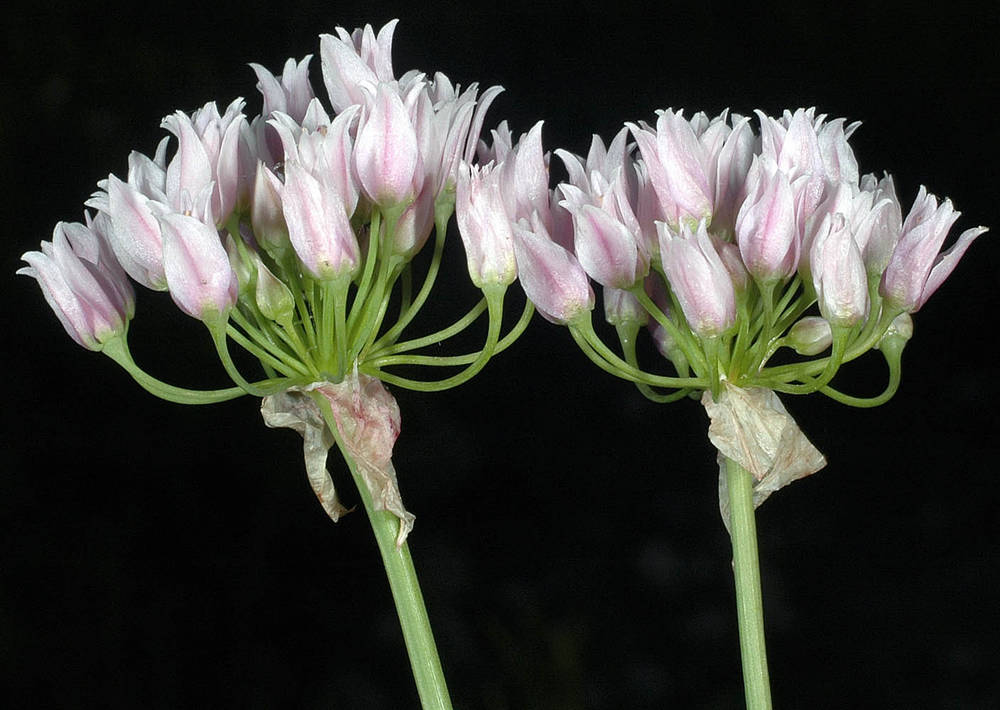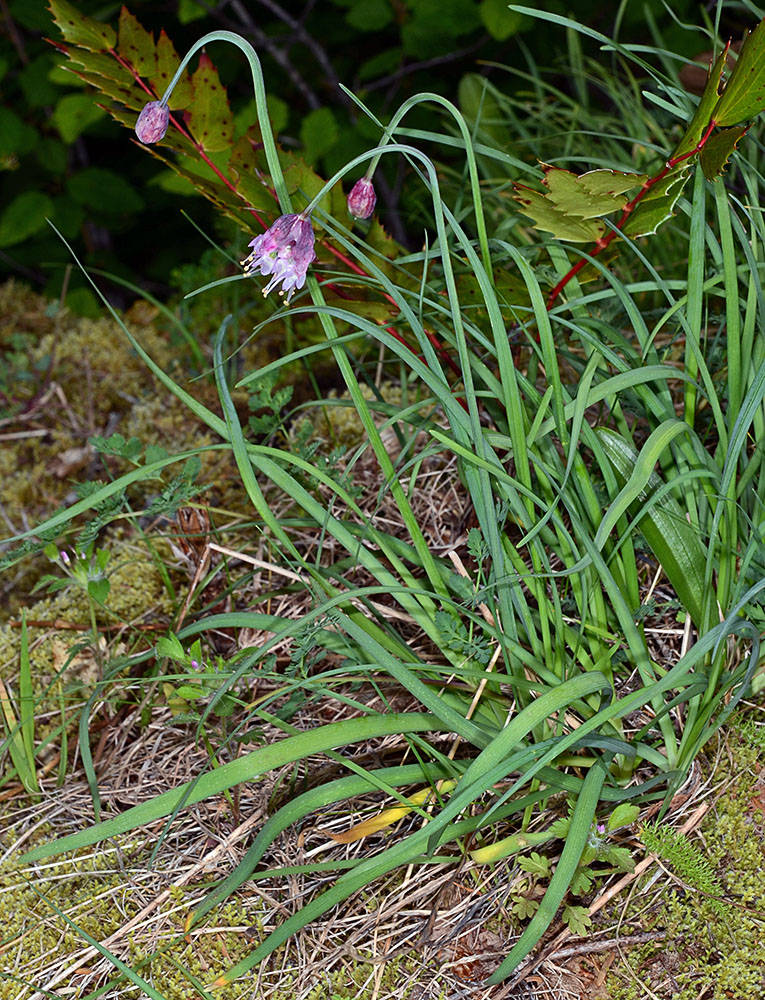Allium geyeri
Allium cernuum
Geyer's onion
nodding onion
2–10+; ovoid or slightly elongate;
outer coats enclosing 1 or more bulbs, reticulate;
cells rather coarse-meshed; open, fibrous.
2–5+, clustered, often short-rhizomatous at base, oblong, elongate;
outer coats enclosing 1 or more bulbs, membranous, minutely striate, cellular-reticulate;
cells in regular vertical rows, narrowly elongate; fibers persistent; parallel; few.
persistent, usually green at anthesis, usually 3–5;
blades solid; more or less straight; flat, channeled; (6)12– 30 cm × 1–3(5) mm.
persistent, green at anthesis, 3–5;
blades solid; flat, channeled to broadly V-shaped in cross section, 10–25 cm × 1–6 mm.
persistent; solitary; erect; terete or somewhat 2-angled, 10–50 cm × 1–3 mm.
persistent, sometimes 2 or more produced successively from single bulb, usually clustered, nodding; solid; terete or ridged, particularly distally, sometimes flattened and narrowly winged, abruptly recurved near apex, 10–50 cm × 1–3 mm.
persistent; erect; compact, 10–25-flowered, hemispheric to globose, not producing bulbils, or 0–5-flowered, largely replaced by ovoid, acuminate bulbils;
pedicels becoming rigid and stiffly spreading in fruit, 8–13 mm;
spathe bracts 2–3.
persistent, nodding; loose, 8–35-flowered, hemispheric;
pedicels 6–25 mm, becoming stouter in fruit, elongating and bending abruptly upward from near point of attachment;
spathe bracts 2.
(4)6–8(10) mm;
tepals erect or spreading; ovate to lanceolate; more or less equal, pink to white;
margins often obscurely toothed;
apex obtuse to acuminate;
stamens included;
ovary when present, inconspicuously crested with 3–6 low processes;
stigma unlobed or obscurely lobed.
4–6 mm;
tepals more or less erect, elliptic-ovate; more or less equal, pink or white;
margins more or less entire;
apex more or less obtuse; at least outer tepals strongly incurved; midribs not thickened;
stamens exserted;
ovary conspicuously crested with 6 triangular processes;
stigma scarcely thickened, unlobed.
=14.
Allium geyeri
Allium cernuum
2 varieties.
Flowering May–Jul. 0–1400 m. BW, Casc, CR, ECas, Est, WV. ID, WA; north to British Columbia, east to MA, southeast to AZ and Mexico. Native.
Allium cernuum is the most widespread native North American onion.
Nick Otting, Richard Brainerd, Barbara Wilson
Nick Otting, Richard Brainerd, Barbara Wilson
- Local floras:
BC,
OR,
WA
- Local Web sites:
Flora NW,
PNW Herbaria
WildflowerSearch
iNaturalist (observations)
USDA Plants Database
- LBJ Wildflower Center
- SEINet
- Plants of the World Online
- Encyclopedia of Life
- Wikipedia
- Google Image Search





